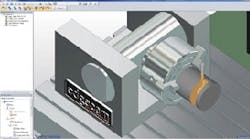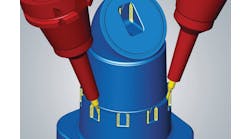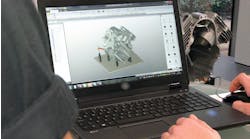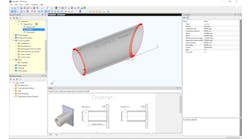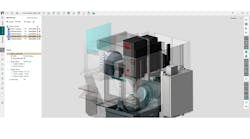Also new to Edgecam 2012 R2 is the Advanced 5 Axis Simultaneous Milling license that introduces new parameters to control the toolpath, a new dialog with images to help explain the options available, and the option to machine multi-blade components.
The Advanced Milling – Quill Support function (for machining on a secondary Z axis) can be included in milling machine configurations, so machine programmers have the ability to switch between the Z axes, control which one is in use, and see the quills movement in Simulator.
“Edgecam 2012 R2 includes further improvements to the User Interface that make the program even more intuitive and easier to use," Lobato said. When editing an Edgecam cycle the original geometry picks are now retained and do not need to be reselected unless the user chooses that approach. A similar timesaving feature is the improved picking of edges on solid models and 2D profiles, so that programmers have full control of picking entities that will be used by other functions within Edgecam.
Also, the Edgecam now allows programmers to to group a number of instructions into user-defined sets within the sequence browser, making it easier to manage a large set of machining instructions.
External rotary slot and pocket features along a cylinder solid model can be identified for subsequent machining. The feature attributes help the user to select the correct tool and machine the feature in rotary mode.
Finally, “steadies” can be included in Turning and Mill/Turn machine configurations now, and included as well in the simulation of the machining sequence in Simulator.
“Extensive research and ongoing development ensures Edgecam constantly enables users to gain the absolute maximum performance from their CNC machines and the CAM process,” according to Lobato.
